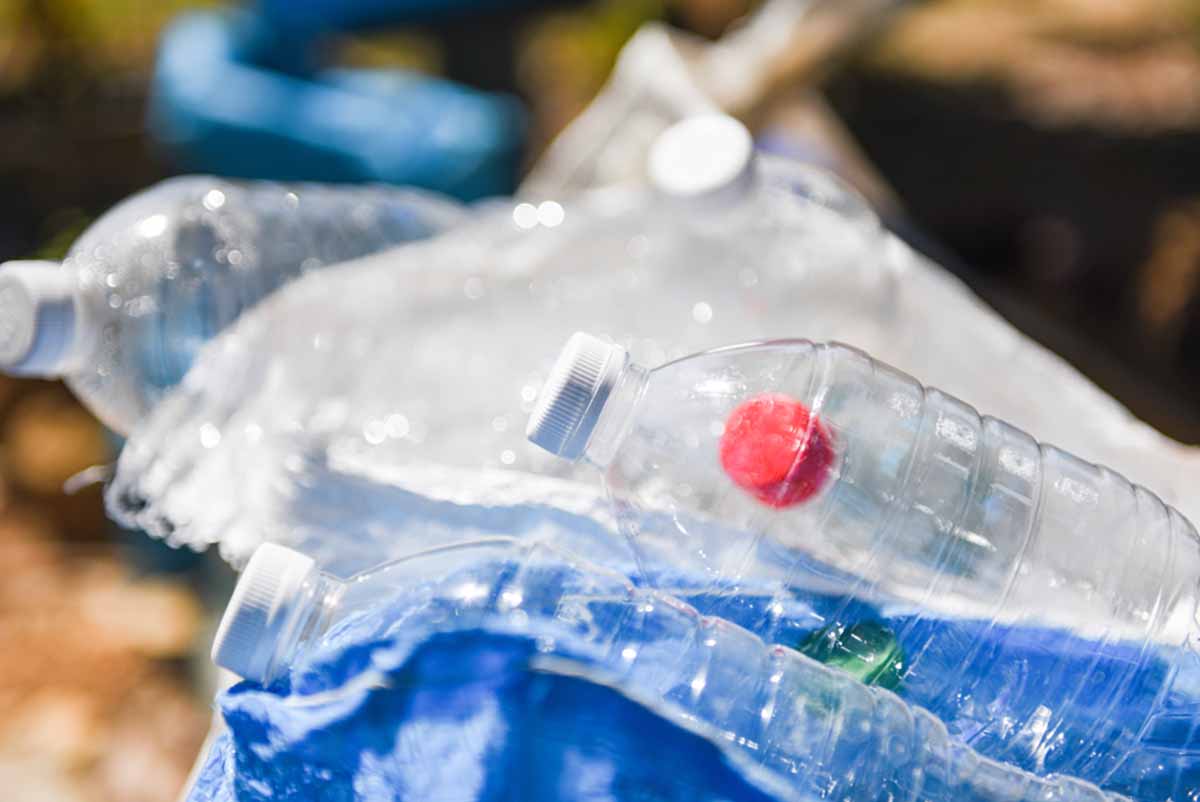
The Biden administration’s “Mobilizing Federal Action on Plastic Pollution: Progress, Principles and Priorities” strategy includes actions intended to reduce pollution from the production of plastics. | Poring Studio/Shutterstock
The Biden administration released a federal strategy aimed at reducing plastic pollution, drawing mixed responses from industry players.
The strategy, “Mobilizing Federal Action on Plastic Pollution: Progress, Principles and Priorities,” outlines existing and new federal actions that will “reduce the impact of plastic pollution throughout the plastic lifecycle,” according to a press release. The 80-plus page report was developed by the Interagency Policy Committee on Plastic Pollution and a Circular Economy.
Those actions include reducing pollution from the extraction of fossil fuels and production of plastic, supporting innovation in alternative materials and processing methods, decreasing plastic generation, improving “environmentally sound waste management” and cleaning up existing plastic pollution.
The White House also shared a new goal, to phase out federal procurement of single-use plastics in food service operations, events and packaging by 2027, expanding to cover all federal operations by 2035.
The Recycled Materials Association praised the strategy, saying the organization “looks forward to working with the Administration as it executes this ambitious program.”
“The recycled materials industry supports the Biden-Harris Administration’s pursuit of ways to reduce plastic pollution by supporting the use of reusable, compostable and highly recyclable products rather than disposable single-use plastic,” the statement noted.
The Association of Plastic Recyclers called the strategy “a significant step as it represents the first comprehensive, government-wide strategy to target plastic pollution.”
APR owns Resource Recycling, the publisher of Plastics Recycling Update.
“APR applauds the report for recognizing plastics recycling as a crucial part of the large-scale, holistic approach needed to achieve a true circular economy for plastic,” APR’s statement noted. “Importantly, the report identifies several key actions that are long-standing APR priorities as proven and necessary steps to improve plastics recycling.”
Those priorities are increasing the supply of high-quality recyclable plastic packaging with design standards and specifications and improving the demand for post-consumer material with minimum post- consumer recycled content requirements, APR added.
However, the Plastics Industry Association said it was disappointed in the strategy, which it said “arbitrarily singles out plastic under the false pretense of a lower environmental impact,” Matt Seaholm, PIA president and CEO, said in a statement.
“Instead of targeting plastics, we support investing in improving our country’s recycling infrastructure and are pleased to see this priority included in the White House’s strategy,” Seaholm added. “New innovations, like advanced recycling, which increase the efficiency, amount, and types of plastics that can be recycled, must not be stifled. Furthermore, we support well-crafted extended producer responsibility policies and reasonable nationally recognized recycled content requirements.”
Environmental NGOs voiced support for the strategy. WWF Vice President and Head of Plastic Waste and Business Erin Simon said in a statement that WWF is “heartened to see this report doesn’t shy away from the negative impacts that plastics have on human health and analyzes the problem through the full life cycle of plastic.”
“Cleaning up the global plastic mess must start at home,” she added. “And today under President Biden and Vice President Harris’ leadership, the U.S. government is doing exactly that. The world is watching; now is the time for bold commitments and concrete action on plastic.”
Ocean Conservancy’s Jeff Watters, vice president of external affairs, said in an emailed statement that the report is “the clearest articulation to date from the White House of the scale and urgency of the plastic pollution crisis and the threat it poses for our ocean and communities.
“This report reiterates what scientists have been saying about the ocean plastic pollution crisis for years, which is that we need to do it all: produce less plastic across the board, invest in waste management and reuse systems and clean up what is already in the environment,” he added.
Report details
The report opens by laying out the effects plastic pollution has on the environment and human health, voicing support for “developing an international agreement that is commensurate to the scale and breadth of the plastics problem.”
“With its multitude of environmental impacts across its supply chain, broad global effects and severe public health consequences, plastic pollution has become one of the most pressing and consequential environmental problems in the U.S. and around the globe,” the report said. “Tackling plastic pollution and its associated impacts will require unprecedented action at every stage of the plastic lifecycle.”
As part of that work, the report noted that environmental justice and respect for the sovereignty of Tribal Nations are vital, as is incorporating Indigenous knowledge in decision making.
The report lists specific tasks under each broad category, such as exploring and determining appropriate minimum post-consumer recycled and/or bio-based content requirements for plastic products and packaging, promoting innovation in design and materials management and economic incentives to maximize the value of recycled materials, and supporting U.S. ratification of the Basel Convention, which regulates the movement of various hazardous materials across international borders.

